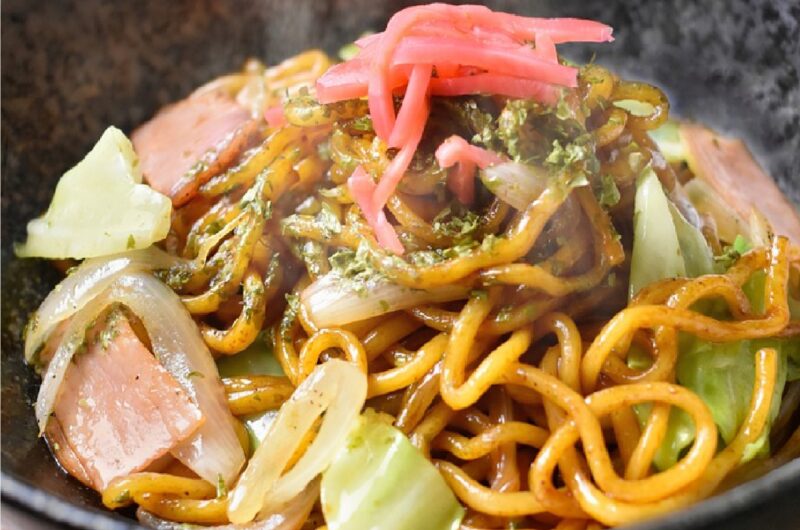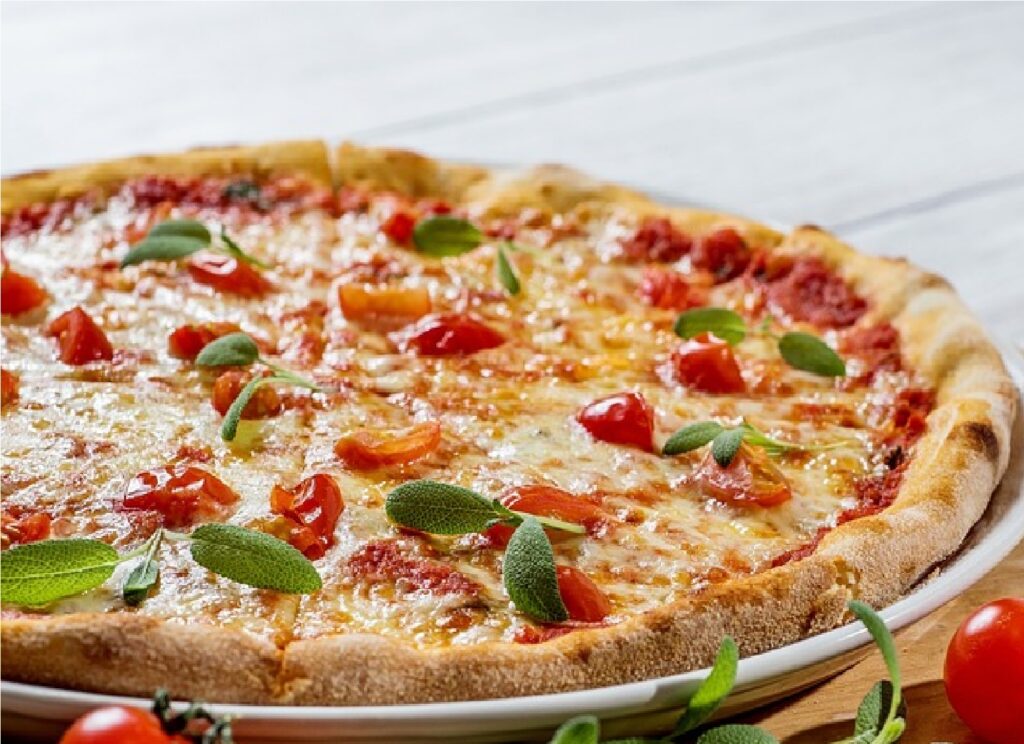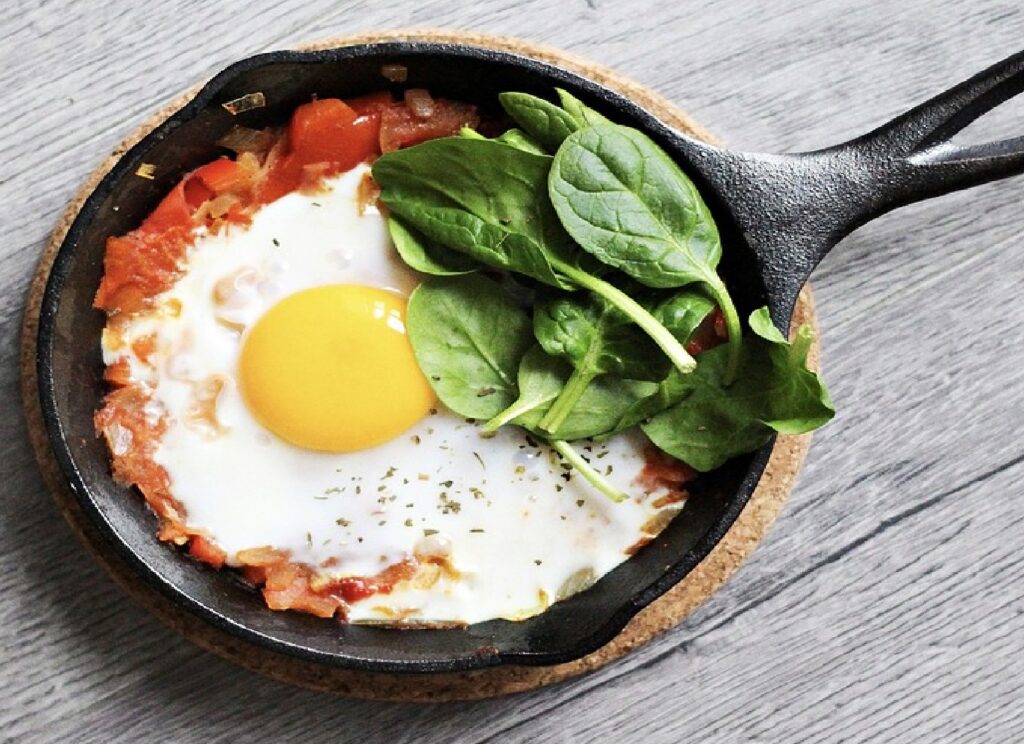There are numerous types of Japanese noodles, one of which is Yakisoba Noodles. Yakisoba is a traditional Japanese noodle dish flavored with salty, sweet, and sour sauce. The name translates to “fried noodle,” and it’s made with wheat flour noodles stir-fried in a flavorful stir fry sauce made from a small selection of Asian sauces and condiments. You can use any protein you want, such as pork, chicken, shrimp, or calamari. Simply substitute tofu or shiitake mushrooms for vegetarians. This special sauce, which is sweet and slightly spicy, distinguishes Yakisoba from other Asian stir-fried noodles. This is a simplified version of the traditional Yakisoba, which features Chuka soba in a thick sauce.
Yakisoba Noodles Ingredients:
- You can substitute green or yellow bell peppers for the red bell pepper.
- Carrot – add some color by combining different colored carrots.
- If you don’t have any green onions on hand, you can leave them out.
- Beef,shrimp, tofu, or more vegetables are also excellent choices.
- Green cabbage is the best cabbage for this recipe.
- You can substitute white onions for the yellow onions.
- Yakisoba Noodles – ramen noodles found in the refrigerator section of most supermarkets.
Ingredients for Yakisoba Sauce:
- Sugar – white sugar will give you the best flavors in this dish.
- Soy Sauce – low sodium soy sauce is the best choice.
- Oyster Sauce – that rich flavor is a fantastic addition to the sauce.
- Ketchup – this will give the dish a tart and sweet flavor.
- Worcester Sauce – a must for the recipe, as it adds a rich, deep flavor.
How to Make Yakisoba
- Step 1: Combine all of your sauce ingredients.
- Step 2: Prepare your vegetables and boil your noodles.
- Step 3: Some varieties are precooked and only require a quick reheat.
- Step 4: In a skillet, cook all of your vegetables until golden brown.
- Step 5: In a separate pan, cook your chicken.
- Step 7: Return your vegetables to the chicken pan. Stir in the sauce until well combined.
- Step 7: Incorporate your noodles into the mixture. Cook for a couple of minutes. Serve!
Here’s some Notes to help you:
- Yakisoba sold at festival stalls usually has very little vegetables in it, but when you make it at home, you can add a lot.
- Yakisoba noodles can be replaced with Chinese yellow noodles.
Recipe Tips:
- 1. Make Use of a Large Cookware
- 2. When it comes to stir-fried dishes, we want to keep the vegetables’ fresh texture and crunch.
- 3. Limit the amount of vegetables and protein. Too many ingredients will result in the noodles steaming.
- 4. Loosen the Noodles Before Cooking with the Rest of the Ingredients To remove the oil, loosen the noodles with your hands and rinse them under warm water.
Try Out These Other Variations too!
1. Miso Ramen:
‘Miso ramen is that the ideal soup for a chilly day.’ The broth is savory and nutty, with chewy and delicious noodles.
2. dish Udon instruction (Shrimp and Vegetables):
Nothing beats the mixture of thick udon noodles and firm dish in a very bowl of tasteful soup.
3. home-cured Shio Ramen:
Umami flavors mix with tasteful toppings and hearty egg noodles during this home-cured Shio ramen instruction.
4. Hiyashi Chka (Cold Ramen Salad):
Hiyashi chuka could be a cold ramen dish with a lemonlike herb dressing drizzled on high.
5. Shoyu Ramen:
Shoyu ramen is light-weight and tasteful, with a light soy flavor and umami undertones. A steaming bowl of this dish is bound to satisfy your cravings.
6. Curry Udon:
The satiny udon noodles and meat area unit served in a very bowl of piping hot curry broth, that adds a rounded flavor.
7. Cold Somen Noodles from Japan:
The cold somen noodles have a light flavor. The dipping sauce is savory, with a pleasant kick from the grated ginger and scallions.
8. Yaki Udon | Stir-Fried Udon Noodles:
a stir-fried noodle dish with vegetables, meat, and tender noodles. It’s lidded with a savory sauce which will please even the pickiest eaters.
9. Zaru Soba (Cold Soba Noodles):
The dipping sauce is delicious and refreshing, and also the noodles area unit light-weight and simple to eat.
10. tomato ketchup pasta (Napolitan):
this simple and cheap dish is jam-packed with savory goodness from garlic, mushrooms, bell pepper, and sausage.
11. Japanese pasta dish (Harusame Salad):
This refreshing dish is difficult to beat with ingredients like julienned ham, cucumber, carrot, and wakame alga.
12. Toshikoshi Soba (New Year’s Eve Soba Noodle Soup):
Buckwheat soba noodles simmer in a very hot dashi broth with finely shredded scallions. It’s wholesome and easy to organize.
MAKING IT DIFFERENT
Change up the beef with chicken or tofu or any veges you like! You can always try out new variations!
COMPATIBLE WITH
Japanese noodles
Difficulty: Easy4
servings15
minutes25
minutes310
kcalIngredients
- For Yakisoba Noodles
Bell pepper
Carrot
Green onion
Beef/Shrimp/tofu/vegetables
Green cabbage
Sweet onions
Yakisoba Noodles
- For Yakisoba Sauce
Sugar
Soy Sauce
Oyster Sauce
Ketchup
Worcester Sauce
Directions
- Combine all of your sauce ingredients.
- Prepare your vegetables and boil your noodles.
- Some varieties are precooked and only require a quick reheat.
- In a skillet, cook all of your vegetables until golden brown.
- In a separate pan, cook your chicken.
- Return your vegetables to the chicken pan. Stir in the sauce until well combined.
- Incorporate your noodles into the mixture. Cook for a couple of minutes. Serve!
Notes
- Yakisoba sold at festival stalls usually has very little vegetables in it, but when you make it at home, you can add a lot.
- Yakisoba noodles can be replaced with Chinese yellow noodles.
Here’s some interesting facts!
The Distinction Between Ramen and Noodles:
Noodle could be a ramen umbrella term.
Noodles area unit a kind of dough-based food. Typically, this dough is formed with flour, rice, beans, or starch. one among them is ramen. therefore all ramen area unit noodles, however not all noodles area unit ramen.
Is it Chinese or Japanese noodles?
The earliest proof of noodles dates back four,000 years to China.
Is Ramyun an equivalent as Ramen?
In Korea, there area unit 2 styles of Ramen. the primary is Ramen, that refers to Japanese-style Ramen, and also the second is Ramyun, that refers to Korean-style instant noodles.
Which culture consumes the foremost noodles?
China is that the world’s noodle-loving country.
Is udon a healthier choice than pasta?
“They area unit historically made up of corn flour and area unit sometimes refined,” Gross explains, “so they need a organic process profile that’s kind of like ancient Western pastas.” In alternative words, they do not have loads of additional nutrition.
Are udon and ramen noodles interchangeable?
Milled flour, water, and salt area unit accustomed create udon noodles. they’re lighter in color than ramen noodles and have a a lot of delicate flavor. one among the foremost necessary aspects of udon noodles is that, in contrast to ramen, they’re not created with egg, creating udon a superb noodle choice for vegans.
What is the name of a thick Japanese noodle?
Udon area unit white and thick Japanese flour noodles. they need a delightfully chewy texture and area unit normally employed in ancient hot Japanese noodle soup recipes, wherever the udon is served in a very savory dashi soup broth with a range of savory garnishes on high.
Is soba synonymous with ramen?
The flavor is that the most noticeable distinction between ramen and soba noodles. whereas soba noodles area unit generally created with buckwheat flour, ramen is usually created with flour.
Is it higher to eat udon or soba?
Which is healthier for your health, Udon or Soba? Soba, with its wholegrain look and buckwheat-heavy base, is that the healthier choice for your Asian noodle game. Buckwheat is low in carbohydrates and calories, creating it an honest selection for those attempting to reduce.
Is soba higher for you than ramen?
Fortunately, soba noodles area unit among the healthiest macromolecule choices on the market. in contrast to ramen noodles, which regularly contain oils, fat, and salt, soba noodles calories (particularly pure buckwheat) area unit low in fat and cholesterol, offer healthy carbs, and supply supermolecule.




